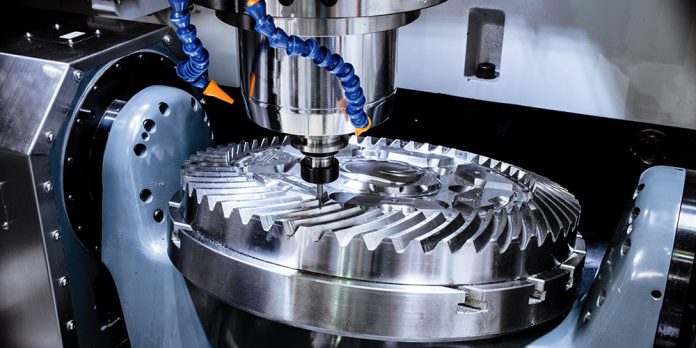5 axis CNC machining is a method that uses CNC technology to cut through materials across five different axes simultaneously. It is a CNC machining technique. The use of five axes simultaneously helps allow for the production of intricate parts. For this reason, processes like 5 axis CNC milling are very popular in industries like aerospace. The procedure also increases the adeptness of production and reduces the amount of time taken to complete product manufacturing.
Five axis machine forms
The market features five main forms of 5 axis CNC machines. Each of these types can be applied in the CNC milling industry. They are:
- The double-swive head: this is where two rotational coordinates are used to manage the directions and movement of the cutter axis directly.
- The dropping swivel head: this is where two coordinates are applied over the cutter. However, the linear axis, in this case, is not perpendicular or vertical to the rotational axis.
- The one-swing one-rotate form: this is where two rotational coordinates are used. Here, one axis is placed on each workpiece and the cutter.
- The double swivel table:this is where two rotational coordinates are applied. The two are used to manage the space rotation during the cutting process directly.
- The droop table: this is where two of the five axes stay on the table. This happens in such a way that the axis is not perpendicular to the rotational axis.
How does 5 axis CNC machining work?
The first thing you should understand is that 5 axis CNC machining uses CNC technology. CNC (Computer Numerical Control) is a process.
The process of 5 axis CNC machining starts with the creation of CAD software. The CAD, known in full as a Computer-Aided Design, is then converted to a CNC program. From here, the program is converted to a language that the tool can understand. The instructions are then sent to the milling machine.
A 5 axis CNC machine uses five axes. Each of the axes features a specific purpose. Below are the purposes;
- X axis- this one promotes movement to the lect
- Y axis- this one allows for front and back movement
- Z axis- this one allows for up and down movement
- A axis- this axis allows for a 180-degree rotation of the workpiece around the Y axis
- B axis- this one allows for a 180-degree rotation of the workpiece around the Y axis
- C axis- this axis allows for a 180-degree rotation around the Z axis
Axis B and C are only present on the 5 axis CNC machines. The first three, X, Y, and Z, are present in all other types of CNC machines.
The benefits of 5 axis CNC machining
This process offers the following benefits:
- Greater accuracy
- Increased productivity
- Increased quality of the finishes
- Better cutting intricacy
- Machining for complex shapes
Conclusion
Note that this type of CNC machine requires more preparation time for CNC programming. This allows for the process to accommodate the complex rotary movement. It also allows for the workpiece to be worked on five sides in a single operation.















